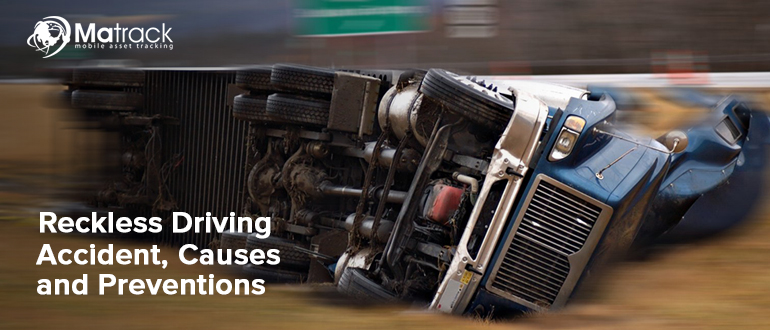Key Takeaways:
- Reckless driving is the act of operating a vehicle with deliberate disregard for safety, leading to dangerous road conditions.
- It includes behaviors like excessive speeding, running red lights, tailgating, illegal racing, and evading law enforcement, all of which increase accident risks.
- These actions result in severe consequences such as heavy fines, license suspension, jail time, increased insurance rates, and legal liabilities.
- To prevent reckless driving, drivers should follow speed limits, maintain safe distances, obey traffic laws, and stay focused on the road.
Understanding Reckless Driving
Definition of Reckless Driving
Reckless driving is defined as the operation of a vehicle with a willful or wanton disregard for the safety of others. This means the driver engages in actions that are dangerous and show indifference to potential consequences.
Legal Definition Across Different Jurisdictions
While the exact legal definition varies, most jurisdictions classify reckless driving as a serious moving violation, often a misdemeanor or felony. Many states define reckless driving based on:
- Speeding excessively – Driving at a speed significantly above the legal limit.
- Aggressive maneuvers – Sudden lane changes, tailgating, or ignoring traffic signals.
- Endangering others – Actions that could potentially harm pedestrians, cyclists, or other motorists.
In the United States, reckless driving laws differ by state. Some states have specific speed thresholds (e.g., driving 20 mph over the limit), while others leave it up to law enforcement’s discretion.
Examples of Reckless Driving
Many behaviors can be considered reckless driving. Here are some common examples:
Excessive Speeding
Driving far beyond the posted speed limit, especially in residential areas or school zones, is one of the most common reckless driving violations. For instance, driving 100 mph in a 65 mph zone is often considered reckless, even if there are no other violations.
Running Red Lights and Stop Signs
Ignoring traffic control devices puts everyone on the road at risk. Running a red light at high speeds significantly increases the chance of a collision.
Tailgating (Following Too Closely)
Driving too close to another vehicle reduces reaction time and can lead to severe rear-end collisions. This is particularly dangerous at high speeds or in poor weather conditions.
Racing on Public Roads
Illegal street racing is a form of reckless driving that endangers not only the drivers involved but also pedestrians and other motorists. This includes engaging in impromptu races, burnouts, or stunt driving.
Weaving Through Traffic
Sudden lane changes without signaling, weaving through cars at high speeds, and overtaking dangerously can lead to serious accidents.
Distracted or Impaired Driving
While texting or driving under the influence of alcohol or drugs is a separate offense, it can be classified as reckless driving if it leads to dangerous behavior on the road.
Driving on the Wrong Side of the Road
Intentionally driving against traffic or in the wrong direction is highly reckless and can result in catastrophic head-on collisions.
Evading Law Enforcement
Attempting to outrun the police or refusing to stop when signaled is a serious offense often categorized as reckless driving.
Consequences of Reckless Driving
Reckless driving carries severe penalties, including fines, license suspension, and even jail time. The exact consequences depend on the severity of the offense and whether it resulted in an accident.
Legal Penalties
- Fines – Penalties can range from $100 to $5,000, depending on the jurisdiction and severity.
- License Suspension – Many states suspend a driver’s license for reckless driving convictions, often for 30 to 90 days or longer for repeat offenses.
- Jail Time – Reckless driving is typically a misdemeanor, with penalties ranging from a few days to several months in jail. However, if it results in injury or death, it can be classified as a felony with much harsher sentences.
- Points on Driving Record – Most states assign demerit points for reckless driving, leading to increased insurance rates and potential license revocation.
Increased Insurance Rates
Insurance companies consider reckless driving a high-risk behavior. A conviction can lead to:
- Higher premiums – Rates can increase by 50% or more.
- Policy cancellation – Some insurers may refuse to renew coverage.
- SR-22 Requirement – In some cases, drivers must file an SR-22, a certificate proving financial responsibility, which makes insurance more expensive.
Civil Liability
If reckless driving causes an accident, the driver may face lawsuits for damages, medical expenses, and pain and suffering claims from victims. This can result in significant financial burdens.
Criminal Record Impact
A reckless driving conviction can stay on a driver’s record for years, affecting employment opportunities, especially for jobs requiring a clean driving history (e.g., trucking, delivery, or rideshare services).
Also see: What is a Collision Avoidance System?
How to Avoid Reckless Driving
Reckless driving is preventable. Following basic road safety rules and being mindful of driving behavior can keep you and others safe.
Follow Speed Limits
Speeding is one of the leading causes of reckless driving citations. Always adhere to posted speed limits and adjust for weather or traffic conditions.
Maintain Safe Following Distance
Tailgating is dangerous and unnecessary. A good rule is the “three-second rule”—keep at least three seconds of distance between you and the car in front.
Avoid Aggressive Driving
Stay calm behind the wheel. If another driver is being aggressive, do not engage. Instead, slow down or change lanes safely.
Stay Focused and Alert
Avoid distractions like texting, eating, or adjusting the radio while driving. A split second of inattention can lead to reckless behavior.
Obey Traffic Signals and Signs
Red lights, stop signs, and yield signs are in place to regulate traffic and prevent accidents. Disregarding them is both reckless and illegal.
Never Drive Under the Influence
Alcohol and drugs impair reaction time, decision-making, and motor skills. If you are under the influence, arrange for a ride or use public transportation.
Plan Your Route
Knowing your route ahead of time helps you avoid last-minute lane changes, sudden turns, and aggressive driving behaviors.
Read More: Following Distance
What to Do If You Are Charged with Reckless Driving
If you are cited for reckless driving, take the situation seriously. Here’s what you should do:
Understand the Charges
Review the exact nature of your offense and the potential penalties. Reckless driving can range from a minor misdemeanor to a felony.
Hire a Traffic Attorney
An experienced lawyer can help reduce charges, negotiate penalties, or even get the case dismissed. Legal representation is especially important if your offense involves an accident, injuries, or high fines.
Gather Evidence
If you believe the charge is unjustified, collect evidence such as dash cam footage, witness statements, or speedometer readings to support your defense.
Consider Defensive Driving Courses
Some jurisdictions allow drivers to take a defensive driving course in exchange for reduced fines or points.
Attend All Court Hearings
Failure to appear in court can lead to additional charges, increased fines, or even an arrest warrant.
Conclusion
Reckless driving is a serious offense with major consequences for drivers and public safety. Whether it involves excessive speeding, aggressive driving, or distracted behavior, reckless driving puts everyone at risk. Understanding the laws, penalties, and how to avoid reckless behaviors can help keep roads safer.
If you find yourself facing a reckless driving charge, taking immediate legal action and following safe driving practices can make a significant difference. Safe driving benefits not just you, but everyone sharing the road.






